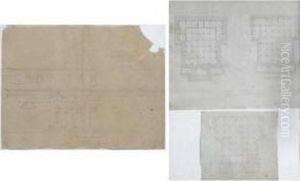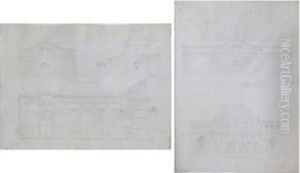Pasquale Poccianti Paintings
Pasquale Poccianti was an Italian architect, primarily active in Tuscany during the late 18th and early 19th centuries. Born in 1774, Poccianti's architectural contributions are notable for their blend of neoclassical elements with the functional demands of modern infrastructure, making him a pivotal figure in the transition from traditional to modern architectural designs in Italy.
Educated at the Accademia di Belle Arti in Florence, Poccianti quickly distinguished himself as a talented architect. His career gained significant momentum when he was appointed as one of the architects for the Lorraine Grand Dukes, who ruled Tuscany at the time. This position allowed him to work on various important projects, including urban planning, palatial constructions, and hydraulic engineering works, showcasing his versatile skill set.
Perhaps the most emblematic work of Poccianti's career is the Cisternone, part of the aqueduct system in Livorno, completed in the 1820s. This grandiose structure is celebrated for its innovative use of space and incorporation of neoclassical aesthetics into a fundamentally utilitarian building, reflecting Poccianti's ability to marry form with function in architecture. His work on the aqueduct system not only solved a significant urban infrastructure problem but also did so with an artistic sensibility that elevated the project beyond its practical purposes.
Poccianti's influence extended beyond individual projects. He played a crucial role in the development of architectural education in Tuscany, advocating for a curriculum that balanced theoretical knowledge with practical application. His commitment to architectural innovation, combined with a deep respect for classical traditions, left a lasting impact on the region's architectural landscape.
Poccianti passed away in 1858, leaving behind a legacy of architectural achievements that continue to be studied and admired. His work exemplifies the best of Italian architecture during a time of significant transition, bridging the gap between the neoclassical and modern eras with creativity and technical prowess.

